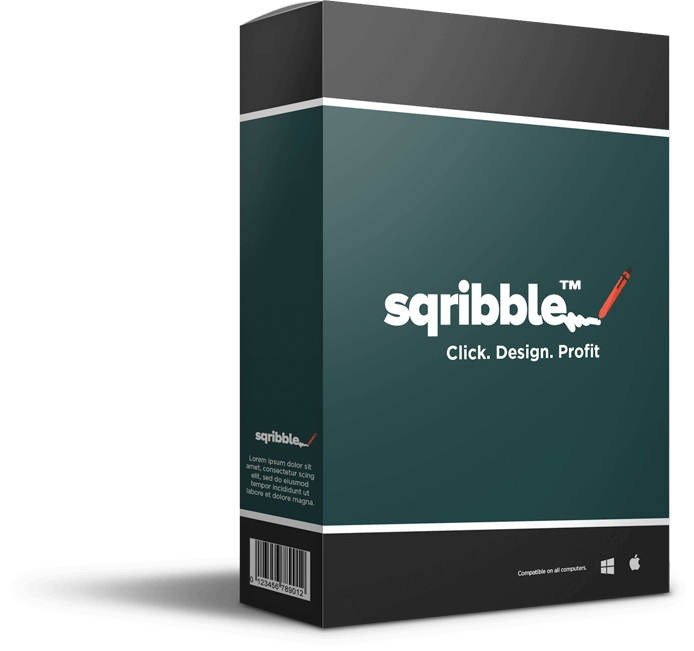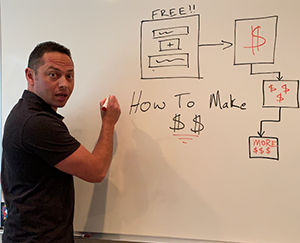How to Maximize Your Video Content: Content Splintering and Intelligent Repurposing written by John Jantsch read more at Duct Tape Marketing
The Duct Tape Marketing Podcast with John Jantsch In this episode of the Duct Tape Marketing Podcast, I interviewed Atiba de Souza, a celebrated marketer known for his expertise in video content and human connections. As the head of a video marketing agency for Doctors, Atiba de Souza combines his deep understanding of human relationships […]
How to Maximize Your Video Content: Content Splintering and Intelligent Repurposing written by John Jantsch read more at Duct Tape Marketing
The Duct Tape Marketing Podcast with John Jantsch
In this episode of the Duct Tape Marketing Podcast, I interviewed Atiba de Souza, a celebrated marketer known for his expertise in video content and human connections. As the head of a video marketing agency for Doctors, Atiba de Souza combines his deep understanding of human relationships with cutting-edge marketing strategies. His entrepreneurial journey, which includes managing gyms, a bakery, and food service companies, provides him with a unique perspective on business and marketing.
During our insightful conversation, we discussed the emerging concept of ‘intelligent content splintering’ and explored how repurposing video content can maximize your marketing efforts. Atiba de Souza shared his systematic approach to breaking down long-form videos into engaging short-form content that resonates with different audience segments. We also discussed the role of AI in enhancing the efficiency of content creation and repurposing, as well as the importance of authenticity in video marketing.
Key Takeaways
‘Splintering’ is the new ‘Repurposing’.
Atiba de Souza emphasizes the transformative power of intelligent content splintering. He explains that understanding your audience’s needs and preferences is crucial in identifying which parts of a long-form video will resonate with them. By focusing on these key segments, agencies can create impactful short-form content that drives engagement and builds trust.
He also highlights the role of AI tools in streamlining the content repurposing process. These tools can assist in formatting and structuring content for various platforms, ensuring that the repurposed content maintains its relevance and appeal across different channels. However, he stresses that a deep understanding of content theory and strategy is essential for effectively utilizing AI.
‘Authenticity’ as he calls it. An overused but essential concept, is a central theme in his approach to video marketing. He believes that being genuine and relatable on camera is more important than striving for perfection. This authenticity helps build a strong connection with the audience, fostering trust and credibility.
Finally, he underscores the importance of having a structured editorial calendar for content creation. By planning and batching video production, marketers can ensure a consistent flow of high-quality content that aligns with their overall marketing strategy. This approach not only simplifies the content creation process but also enhances its effectiveness in reaching and engaging the target audience.
Questions I ask Atiba de Souza:
[02:04] Would you agree that video is the perfect medium for repurposing?
[03:14] Exactly how does ‘Splintering’ work?
[04:45] How do you begin with intentional scripting?
[06:27] What are some current trends we need to be aware of?
[08:08] Is it possible to overproduce a video?
[10:00] What is an editorial calendar?
[13:24] What is AI’s role in content, and what role do you believe will be left for humans to play?
[15:52] What role does that play in repurposing?
[18:31] Is there someplace you’d like people to connect with you find out more about your work?
More About Atiba de Souza:
Like this show? Click on over and give us a review on iTunes, please!
Connect with John Jantsch on LinkedIn
Speaker 1 (00:00): Duct Tape Marketing really helped me to shave at least six to eight months off of work that I was dreading after leaving the corporate world. Even before I participated in the agency intensive training, I had already landed in my first customer. This, in essence, more than paid for my investment in Duct Tape Marketing.
John Jantsch (00:18): What you just heard was a testimonial from a recent graduate of the Duct Tape Marketing certification intensive program for fractional CMOs marketing agencies and consultants just like them. You could choose our system to move from vendor to trusted advisor, attract only ideal clients, and confidently present your strategies to build monthly recurring revenue. Visit DTM world slash scale to book your free advisory call and learn more. It’s time to transform your approach. Book your call today, DTM World slash scale.
(01:03): Hello and welcome to another episode of the Duct Tape Marketing Podcast. This is John Jantsch. My guest today is Atiba De Souza, known as a super connector and video content. Superman, you can see is wearing the gear celebrated marketer who champions the power of genuine relationships as the head of a video marketing agency for doctors, Atiba combines marketing expertise with a deep understanding of human connections. His entrepreneurial journey includes managing gyms, a bakery and food service companies, giving him a unique business perspective. So Tibo, welcome to the show.
Atiba De Souza (01:40): Thanks, John, for having me. And first, it’s a pleasure, man. I’ve been a huge fan of yours for a really long time.
John Jantsch (01:48): I appreciate that. I’m glad there’s a couple of you still left out there. So we, I think, connected over most recently anyway, over just kind of this idea of repurposing content. And it’s funny, I know your primary medium is video, is that right?
Atiba De Souza (02:03): Yes, correct.
John Jantsch (02:04): Yeah. I think video just happens to be the perfect medium for repurposing, isn’t it? Yeah, I mean, especially with some of the new tools, right? AI and stuff. Yeah. I mean, video captures voice and tone and point of view and expertise that can then be repurposed. So maybe talk a little bit about, because you’ve developed a pretty systematic approach to doing that, so maybe let’s start breaking down the elements of that.
Atiba De Souza (02:29): Yeah, absolutely. And it’s interesting, John, because I had a good friend of mine call yesterday and we were chatting and near the end of our conversation, I have one more question for you. He said, I’ve been posting videos on YouTube and I’ve noticed that I’ve taken those videos and I’ll turn ’em into a short and I’ll post a short, and every time I do, I get a subscriber or two off of that short. So should I create more shorts? What should I do? I mean, how this work? So everyone knows the word repurposing. I call it a four letter word only because it’s been bastardized. It just means, hey, take a piece of content, cut it up, and stick it back out there. And what I explained to my friend yesterday is it’s not just about repurposing, it’s about splintering. It’s about understanding the audience and are there other pieces of content in your long form that you created that will resonate with your audience that they will want to watch? If so, cut those, add those as well. And so that’s really where it starts. Go ahead. Go ahead. It starts with understanding what your audience needs and wants.
John Jantsch (03:42): Okay, I can imagine somebody saying, yeah, I get that, but how do I do that?
Atiba De Souza (03:46): And so we call it intelligent splintering. And what we mean by that is if you create a video, John 10 minutes, you talk for 10 minutes on a topic, everything that you said in that video was an answer to a question that someone could have asked. And so the question is figuring out which questions did I answer, and if I can figure out the questions I answered are those actual questions my audience is asking that they care about if they are. And so you’re getting congruence there. Then those are splinters that we make, cuts, shorts, whatever you want to call ’em of the video. That’s how you start to understand this is what the audience wants and this is how I pull it out of my video.
John Jantsch (04:36): So in some ways, I’m sure some people just do it instinctively, almost, or because they’ve been doing it long enough that they’re not even sure they’re doing it, but they’re answering those questions. But for somebody who maybe hasn’t done a lot of that, I mean, is that sort of intentional script writing is to actually, what are those questions? How do we work those in?
Atiba De Souza (04:55): Yes. And so when we teach people how to create videos, it is very intentional script writing. It is very intentional of, okay, what is the major question that you’re answering with this video? And what are the sub-questions you’re answering with this video? So when it’s time to splinter it, we already have the answer. And so then a lot of people, John, and I’m sure you’re going to ask me this, will say, well, what if I already created a video and I don’t know? Well, here’s what you do. It’s actually really simple, the topic that you covered in the video, go to Google and put that topic in the search. Hit enter, scroll about a third way down the page a little bit more now with the generative AI at the top. And you’ll get to a place called people also asked. And those are real questions that real people ask. And Google’s going to give you a list of questions about this topic that people are asking. And then you ask yourself, did I answer any of those questions in this video? There’s your answer. Yeah.
John Jantsch (05:56): Yeah. You can almost make an entire script up from some of those videos if people are asking it. I mean, if it registers high enough on that, enough people have asked that, then you should be answering that question, right? Yes.
Atiba De Souza (06:10): Yeah. Yes, and yes.
John Jantsch (06:12): Yeah. So talk a little bit about video in general. Are there some trends today? Are there some styles today? It seems like, I mean, video’s been around, well, it’s been around forever, but it’s been in the hands of people like you and me for 20 years now. Are there some current things that we need to be aware of, like length and lighting and subtitles and all the kinds of things that we need to do if we’re going to produce a video that’s going to be effective?
Atiba De Souza (06:39): The number one thing, and this is the one that no one is going to want to hear me say authenticity. Okay? And here’s what I mean by that. What I mean by that is no one’s looking for you to be perfect. No one’s looking for this to be a newscast on the six o’clock evening news. You’re not Dan Rather, okay? That’s not what they’re looking for. They’re looking to connect with you, and so they want you to be you. Yes. If you stutter, stutter, be you on camera, stop trying to be someone else. Stop going on social media and seeing all of these people that you think are polished and trying to be like them. That’s not what you should do at all. You can do all the other stuff, and we can talk about the other stuff, John, but if you miss on this one, it’s going to fail because here’s why video is so powerful. And John, you kind of said it a little bit earlier, but here’s why video is so powerful, because there’s this no and trust continuum that people need to be on in order to do business with you and business, sorry, video builds that know, like, and trust automatically. However, when they pick up the phone or they get on Zoom and they then meet the real you, if the real you doesn’t line up with who they saw on video, now you’ve broken trust.
John Jantsch (08:08): So there’s actually an element to where you can overproduce a video. If somebody just feels like it’s, Hey, I’m coming to you today because I have this idea, and I’m just wondering if other people have, I mean, that’s almost sometimes if that’s truly who you are, that’s more effective maybe than that thing that had a full three camera shoot, right?
Atiba De Souza (08:27): Yes, absolutely. Now, at the same time, when I say authentic to who you are, if you are that person who you’re hair is never out of place, if you’re always in the best outfits, and I mean if you’re always dressed an eyes, and you’ve got to be that on camera too.
John Jantsch (08:44): Yeah. I mean, that’s obvious. That’s the answer, be you. Let me tell you, and hopefully you don’t do these all the time or I’m going to get myself in trouble, but the video that drives me crazy is when the person’s in their car and they check out their phone and they start talking, and so many people do that. Is that an effective tool or is it just like, oh, I’m going to be like, I saw them doing it. To me, it’s sort of off-putting.
Atiba De Souza (09:08): Yeah, so there’s a ton of copycat, right? Always there is a ton of copycat. To answer your question, I think I’ve probably done in the car video maybe three times in my life. Honestly, it doesn’t resonate with my audience. However, my wife, on the other hand, when she was talking to a few years ago, she had a product and she was talking to busy moms who were always on the go,
John Jantsch (09:33): Always in the car, in the car.
Atiba De Souza (09:36): And so it really depends on your audience. If you are talking to executives who are sitting in boardrooms and you’re in your car, not where they are. And so it really, again, that gets all the way back to knowing your audience. And I say it all the time, you got to be obsessed with your audience. And John, I’m preaching to the choir with you on that.
John Jantsch (10:01): So talk a little bit about editorial calendar. A lot of times what I think overwhelms people is they know they should be doing this. They wake up on Monday and go, what should I do? And it feels really hard. Then how do you employ an editorial approach to your content creation?
Atiba De Souza (10:16): Yeah, it’s a great question. It’s a really great question. And so in order to understand that, and there are a lot of people who’ve talked about that in terms of content strategy, but there’s also something that’s missing in there, which is content theory that has to go together. So let’s start with the content theory. Content theory is going to talk about the fact that there is a journey that your ideal customer needs to take with you through your content. So it’s understanding the customer and then understanding the journey and how you fit there. That’s the theory. We break that down into what we call why, how, and what content. So there’s three big buckets. The why super philosophical, why is this important? Why should you care? Why do I care? Why does it matter to your world? So something as simple as the debate between red or white sauce for spaghetti.
(11:17): Why is it important? Well, I only eat white sauce because I’m sick and tired of getting red sauce on my white shirts. So that’s your why content that connects you to people. Then how content says, how do we do something? So it’s showing them a small piece of what you do and how you do it. Building credibility, building credibility, small piece of what you do, and then what content. This is the challenge, the what? Content is what most of us want to create. It’s that post that gets people to click and buy or click and sign up, and we want to create all of our posts that way, and we shouldn’t. Okay? And so only 15% of your posts should be there, and that is, and how we teach it is, would you like my help with that? Yeah.
(12:07): Right? So that’s the theory. The theory is we’re moving them through. We align philosophically, I show you I can do what I say I can do. Would you like my help with it? That’s the theory. Okay. Now, let’s marry that with strategy. And so what we teach there is number one, everything should start because we are video first. Everything starts with your long form video. Your long form video is on a particular topic, answering a particular question that someone in your audience has. You answer that once you’ve created that long form video, now you can now take and create short form. That is why, how, and what type content based on that long form. And so it all fits together. It all fits together. You’re looking at one video a week, so four videos a month for some people, and for most people, we suggest that you batch it, take one day a month that you’re going to record all four videos. That creates the ease of creating your calendar. Now, it just all kind of grows and flows out of there very nicely and very simply.
John Jantsch (13:16): So we’re 17 minutes in the show, and I haven’t asked you about ai. What role do you see? I like to ask this two ways now. What role do you see AI playing in content, and then what role do you believe will be left for humans to play in content?
Atiba De Souza (13:30): Oh, there’s massive role for humans to play in content. Okay. Number one, if we have to understand what it is we are creating, and that gets back into the theory, we have to understand the journey. We have to understand why all of that works. AI can help us ideate through how to do the thing, but if we don’t actually understand the process, we’re just throwing stuff against the wall. So I am a hundred percent for ai. Matter of fact, we use a ton of ai. We’ve been using AI tools since 2015. So we’re not new to AI tools. We love them, but you cannot use them unless you understand the theory of what we’re doing and why it works, and that’s where the human has to stay.
John Jantsch (14:24): Yeah, I’ve long said that. I don’t think AI will ever get to the point where it can understand that kind of context. And that really actually makes strategic thinking, makes theory as you’re talking about probably more important than ever because so many people are just going to crank out the robot stuff.
Atiba De Souza (14:43): And I also believe we are in the age of AI right now. And so right now, over the next couple of years, next two years or so, there’s going to be a boom of people creating content and it’s going to go wild. And all of a sudden, people who were awful at creating content are going to become great at creating content until it all peters out and it is going to peter out. And when it peters out, the people who are going to win are the people who actually understand what the heck we’re doing.
John Jantsch (15:16): Yeah, I hear people talking about ai. It’s some magic fairy dust or plumbing is how I really refer to it. I mean, I think it’s really just going to be baked into everything and people stop paying attention to what it even is because it’s just going to become a feature of pretty much every aspect of business and probably of life in general. And I agree with you. I think it’s still in the sort of hype bubble. You’ve been around long enough. Remember when social media was in that same hype bubble and everybody was like, everything’s changed. So it’s like, well, nothing’s really changed. So speaking of social media, what role does that play in repurposing today?
Atiba De Souza (15:56): A massive role because now you have the ability that as we start to repurpose splinter intelligently splinter content, we’ve got multiple places that we can put it. This is also where AI helps and those types of tools, because now once you have the theory, and this is the cut that I’m going to make, well, this will work better this way on Instagram versus it will work differently on LinkedIn, and the AI tools can actually help you format and structure those faster than we ever could before. Social media is huge because it’s where people go to consume little bits, and those little bits start to add up. And I read it recently that people need to have touchpoint of now something like 140 times before they purchase. Remember what it used to be, Stephan?
John Jantsch (16:48): Yes. Yes.
Atiba De Souza (16:49): Right. And so how do you get to 140?
John Jantsch (16:52): Yeah. Do you still see it as what people refer to as top of funnel? I mean, or is it a mechanism that you believe can actually be part of conversion?
Atiba De Souza (17:04): So it depends on your business and it depends on how things are set up. So for example, we have clients who they are very big into running Google ads and they run Google ads to webinars. Great, wonderful. You run your Google Asset webinars, that’s your top of funnel coming in, and then we retarget and send ’em to the socials. And so now social is playing more middle funnel for you, and so that’s them. Whereas we have other clients in the cosmetic industry, it’s all top of funnel.
(17:41): And then we have other clients who use it throughout the entire thing. So it really depends on the strategy of what it is that you’re building and where it fits. And that’s the key. Where does it fit for your audience? Where does your audience want it? I was having that conversation with my wife the other day. It was like, she’s like, well, I’m going to be selling this thing. And I mean, it doesn’t matter what social platform. Yes, it does. Because the fact of the matter is you’ve never bought anything off of Facebook marketplace, but you bought things off of TikTok marketplace. Why? Because you see TikTok as a place to buy this type of stuff, but you’ve never bought anything like this from Facebook in your head. You don’t equate Facebook with this purchase, right? So it can’t be bottom of funnel for you.
John Jantsch (18:26): Yeah, yeah, yeah. Motiva, I appreciate you stopping by the Duct Tape Marketing Podcast. Is there someplace you might want to invite people to connect with you and find out a little more about your work?
Atiba De Souza (18:37): Absolutely. So John, again, thank you, and we probably open more questions today for you. If you’re listening to us, then we actually answer, and I would love the opportunity to continue the conversation and continue answering your questions. So do me a favor, go to meetatiba.com. That’s Meet A T I B as in boy A .com. That’s going to take you directly to my LinkedIn. When you get to my LinkedIn, don’t hit the follow button, hit the connect button or the more hit the connect button and that will let you send me a message, tell me you saw me here on the Duct Tape Marketing Show with John. Let’s connect human to human and let’s have a conversation.
John Jantsch (19:15): Awesome. Well, appreciate it again, you spending a few moments with us, and hopefully we’ll run into you one of these days soon out there on the road.
Sign up to receive email updates
Enter your name and email address below and I’ll send you periodic updates about the podcast.
Recommended Story For You :

How To Make $3493 Commissions Without Doing Any Selling

Successful dropshippers have reliable suppliers.

People Think I Use A Professional Voiceover Artist. NO! I Just Use Speechelo!

Make Money Testing Apps On Your Phone Or Tablet

Make More Money or Lose Everything

Sqribble Is The ONLY eBook Creator You’ll Ever Need.

Work & Earn as an Online Assistant

Create Ongoing Income Streams Of $500 To $1000 Or More Per Day

It's The Internet's Easiest Side Business.






